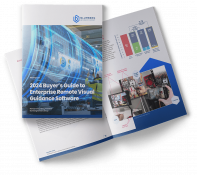Help Lightning Blog
Optimize Planned Downtime Using Remote Visual Assistance

The fact that planned downtime is necessary to maintain operational efficiency and safety doesn’t make it any less annoying – and often dreaded – for service, manufacturing, energy, and maintenance companies. Planned downtime is inevitable. The objective is usually centered around implementing upgrades, ensuring safety, or to make changes. Planned downtime protocol and implementation is typically created weeks, if not months, in advance to ensure downtime is quick, efficient and minimally disruptive to operations. However, things don’t always go according to plan, resulting in lost revenue and unhappy customers.
Problems and extended disruption occur for a range of reasons. Some are anticipated in the downtime plan, while others are not. These can include specialists and technicians inability to be onsite (due to illness, travel delays, etc.), problems with technology or machinery, unexpected equipment failures, outputs that don’t match the plan, and so on. Sometimes downtime operations simply take longer than anticipated in the plan.
With Remote Visual Assistance technology (RVA), planned downtime no longer has to be a dreaded fact of life on the job site. Instead, it can be fast, efficient, and in complete alignment with planned downtime protocol.
Together with Blumberg Advisory Group, we recently put together a comprehensive guide on reducing the cost of downtime: Remote Visual Assistance: The Optimal Last Mile Support Tool for Reducing the Cost of Downtime. In it, we explore the true costs of planned and unplanned downtime, how to calculate downtime costs, and we discuss impactful downtime scenarios many companies find themselves in. Additionally, we look at how companies can leverage Remote Visual Assistance (RVA) technology to optimize operations to ensure planned downtime is as fast and efficient as possible.
What is Remote Visual Assistance?
Help Lightning’s RVA technology uses Augmented Reality (AR) to generate merged video streaming on any device. Users on both sides of the screen have the ability to dynamically engage with each other’s view, from anywhere in the world. RVA virtually replicates the experience of being in the same physical space, enabling people to work together on equipment as if they were side-by-side.
This looks like reaching into each other’s screen to point to a part or component, making annotations right onto a shared view, incorporating tools to demonstrate a complex function, freezing a frame for a more granular view, and visually collaborating in ways that are entirely unique to your specific use case.
Using RVA to Optimize Planned Downtime
Whether it’s planned downtime for an entire factory or partial downtime for a system of equipment, incorporating RVA helps your protocol stay on track. Additionally, leveraging RVA could allow you to eliminate downtime altogether. Help Lightning customers report a reduced need for downtime, and that planned downtime occurs with fewer unexpected problems, the ability to resolve problems faster, and the ability to effectively and safely speed up operations related to planned downtime.
For example, if your team of technicians cannot make it onsite due to a travel cancellation (a common problem these days), RVA makes it easy to virtually transport them to the job site no matter where they are located. Additionally, if the goal is to reduce planned downtime altogether, RVA can be used to incorporate technicians into regular equipment audits to ensure optimal operations.
No matter what the reason, RVA enables faster and more efficient downtime. This translates to reduced downtime costs, increased productivity, and happier customers. Not to mention that RVA can be used to improve other metrics, including reduced First Time Fix Rate, Service Level Agreement, Mean Time Between Failure, and more.
Our whitepaper Remote Visual Assistance: The Optimal Last Mile Support Tool for Reducing the Cost of Downtime goes into greater detail on this. This includes the ability to bring in expert technicians remotely if they cannot be onsite, the ability to anticipate problems before they occur, and how to calculate the true costs of downtime.
Get Help Lightning’s Guide on Leveraging RVA to Reduce the Cost of Downtime
Be sure to get our comprehensive guide on downtime: Remote Visual Assistance: The Optimal Last Mile Support Tool for Reducing the Cost of Downtime. It discusses the types of downtime, goes into the specific consequences of downtime, provides information on calculating your company’s cost of downtime, and how to reduce – and even prevent – planned and unplanned downtime.
This is a must-have guide for manufacturing, energy, and service companies aiming to optimize operations for profitability, productivity, and overall customer experience. Click here to download.












